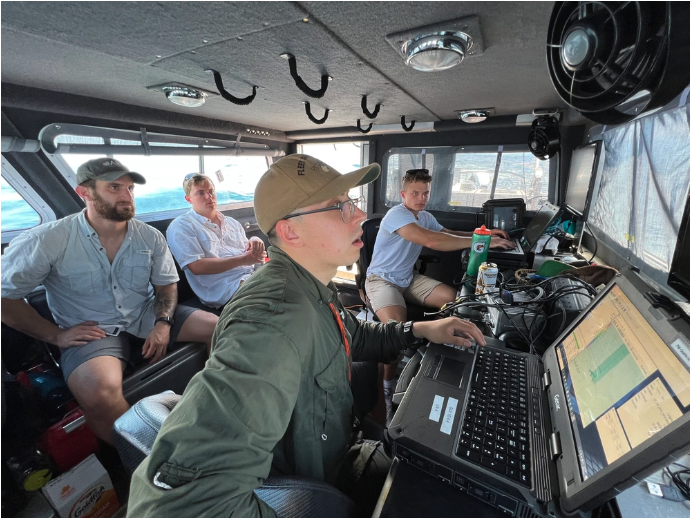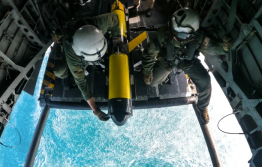Navy oceanography enterprise adopts new, ‘first of its kind’ data strategy

A leading navigator for the U.S. military has approved the new Naval Oceanography enterprise (NOe) data strategy to set a clear path forward for managing the United States’ complex and growing cache of maritime information assets, a senior Navy official revealed to DefenseScoop.
“This document — the first of its kind in the Information Warfare community — superimposes data management best practice and Defense Department priorities onto the Navy’s complex and critical mission of delivering environmental information,” the official told DefenseScoop on Wednesday on condition of anonymity to discuss a document that has yet to be publicly released.
Months in the making, the new strategy was officially signed by the Oceanographer and Navigator of the Navy Rear Adm. Ronald Piret in March.
This overarching approach follows enterprise-wide data strategies issued by multiple federal agencies, including the Pentagon, in 2020 to fundamentally address evolving data management and maturity issues across the government. Shortly after that, the Navy followed suit with the release of a service-specific data implementation plan.
The new NOe data strategy aligns to that higher-level data guidance, the senior Navy official — who works in the Office of Oceanographer and Navigator of the Navy (OPNAV N2N6E) — noted.
On top of his position as chief oceanographer and navigator, Piret serves as commander of the Naval Meteorology and Oceanography Command (NMOC) — and he also recently led the U.S. delegation at a major, triannual international hydrography assembly, in Monaco.
In a recent interview after that event, Piret told DefenseScoop that NMOC is the Defense Department’s “leading authority for surveying the ocean and sensing that battlespace.”
“We are about 2,600 personnel globally distributed among 14 commands — and those commands range in activities from undersea warfare and electromagnetic propagation, to ocean and atmospheric modeling, and using high performance computers and tropical forecasting, as well, in terms of hurricanes and typhoons and those implications,” Piret said.
“Certainly nobody does it like us over the oceans and seas,” he added.
Adding more context around critical maritime data assets on Wednesday, the senior Navy official told DefenseScoop that the Naval Meteorology and Oceanography Command retrieves over 124 million environmental observations per day, processing 2.3 billion core-hours of data and publishing over 400,000 forecast models annually.
Still, “as data volume grows, managing data and delivering critical environmental products to warfighters who use them is an increasing challenge,” they said.
Recognizing that challenge, back in 2021 the Oceanographer of the Navy created a new position, the principal assistant for NOe data, within the Office of the Chief of Naval Operations to approach and improve upon data management and dissemination issues. Jennifer Taylor currently serves in that role.
Taylor led the production of the new strategy, which the senior official who briefed DefenseScoop said is meant to be an “NOe-wide vision” and “North Star” for all data-related functions.
“The primary achievements for the document are the definition of authoritative environmental data, establishing an NOe dissemination architecture, developing foundational Data Governance, and building a data literate culture across the enterprise,” the official said in an email.






